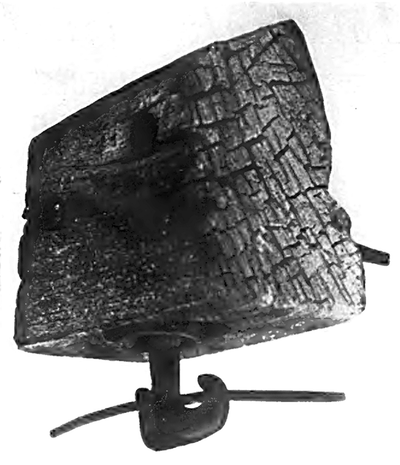[Trade Journal]
Publication: Telephony
Chicago, IL, United States
vol. 111, no. 22, p. 28, col. 1-2
75th Anniversary of Transcontinental Telegraphy
On the site in New York City where Samuel B. Morse, 100 years ago, completed the first practical instrument that made telegraph wire communication possible, was celebrated recently the 75th anniversary of the inauguration of transcontinental telegraph service. The celebration was held October 24 in the main building of New York University where Mr. Morse, then a professor of art at the university, had his laboratory. Simultaneous ceremonies were conducted in 11 western states.
The ceremony, which was broadcast over radio station WNYC, included the transmission of original messages from Stephen J. Field, chief justice of California, to President Lincoln as well as those between other wire officials when telegraph wire service replaced the Pony Express as a means of communication.
For the New York celebration a veteran telegrapher, Edson S. Brewster, wearing a picturesque frock coat, high collar and Windsor tie, typical of the Civil War period, fingered the key of a modern telegraph set alongside of which was placed a replica of the original Morse instrument.
 |
| The Accompanying Illustration Shows An Iron Nook Type Insulator From the Original Telegraph Line, Built 75 Years Ago, That Paralleled the "Pony Express" Route From Sacramento, Calif., to the East. Due to the Faster Communication, Thus Afforded, the Telegraph Line Soon Put the "Pony Express" Out of Business. This Historic Insulator Was Sent to Telephony by D. H. Townsend, Manager of the Churchill County Telephone & Telegraph System, Fallon, Nev. Later, Many of the Original Telegraph Poles and Insulators Found Their Way Into the Telephone Lines in the Lake Tahoe Region of California and Across the Nevada Deserts. Some of the Original Poles Are Still in Use Around Stillwater, Nev. While the Original Hook Insulator is Still Attached to Them, the Tele. Phone Wires Are Attached to Insulators on Modern Brackets. Several of the Hook Type Insulators Are in Use on the Telephone Circuits From Carson City to Glenbrook, Nev. One, in Particular, is Attached to A Pole at the Side of Transcontinental Highway U. S. No. 50, Near the Top of the Mountain Grade. This Highway Follows the Original "Pony Express" Trail in That Section. Thus, All in One Spot Are Found Mementoes of Many Years of CommunicationóClose to 90 Years. In Its Day the Hook Insulator Was "Tops" in Insulators. Cross-Arms Probably Were Not Even Thought of and Single Wire Grounded Circuits Were Used. the Wooden Block Into Which the Insulator Was Inserted, Was Nailed Near the Top of the Pole, With the Hook Insulator on the Under Side of the Block. Note the Wrought Iron Nails That Fastened the Block to the Pole. Poles at That Time Were Mostly of the Square Variety, Cut From Redwood. the Program Was Sponsored by the Oregon Trail Memorial Association in Cooperation With New York University, the Boy Scout Foundation of Greater New York and the Western Union Telegraph Co. the Speakers Traced the History of Communication Facilities in Colonial Days, the Development of the Telegraph and the Hardships Encountered by Pioneers in Establishing the Transcontinental Line at the Outbreak of the Civil War. |
The first message from west to east, it was recalled, was sent by Brigham Young, Mormon leader, before the construction gang working from San Francisco had reached Salt Lake City. It said Utah had not seceded and still was firm for the Constitution.
A few days later the eastward and westward lines were joined and on October 24, 1861, Justice Field sent the first transcontinental message to President Lincoln, expressing the loyalty of the West to the Union.
One of the messages retransmitted during the ceremony was an original greeting of 1861 from Mayor Tescher-macher of San Francisco to Mayor Wood of New York.
At a luncheon in the Hotel Brevoort, closing the celebration, a painting by W. H. Jackson, pioneer artist and photographer, showing the last Pony Express passing the raising of the last telegraph pole of the transcontinental line, was presented to Charles H. Carroll, general manager of the Western Union Telegraph Co.
